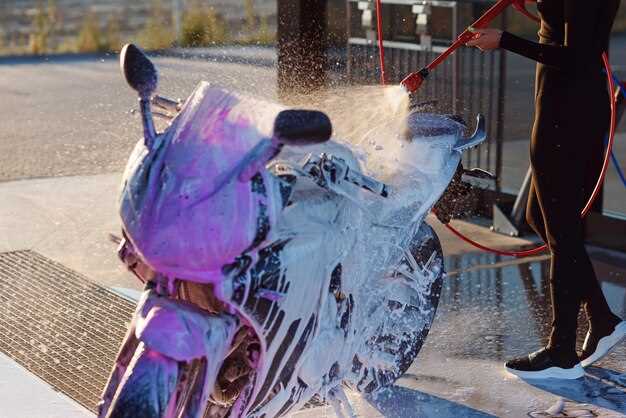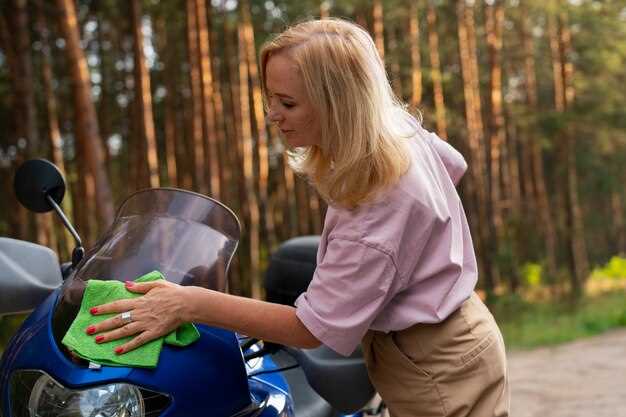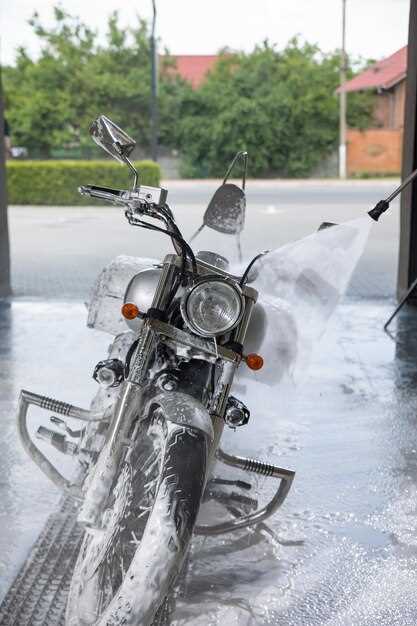
Maintaining the pristine condition of your motorcycle’s paint is essential not only for aesthetics but also for ensuring long-term protection against environmental elements. Motorcycles are exposed to a variety of harsh conditions, from UV rays to dirt, grime, and road debris, all of which can compromise the integrity of the paint finish. Thus, adopting appropriate cleaning techniques is critical for motorcycle enthusiasts who desire to keep their prized possession looking its best.
The process of motorcycle paint care begins with understanding the specific needs of the paint type used on your bike. Various finishes, whether glossy or matte, require tailored approaches to maintain their lustrous appearance and protection. Employing the correct cleaning products and methods not only prevents damage but also enhances the durability of the paint, allowing you to ride in style without compromising quality.
In this article, we will explore effective cleaning techniques that ensure your motorcycle’s paint remains vibrant and protected. From selecting the right cleaning agents to proper washing and drying techniques, each step is vital to achieving a long-lasting finish that can withstand the test of time. Join us as we delve into the best practices for motorcycle paint care that will keep your ride looking new for years to come.
Pre-Cleaning Preparation for Motorcycle Paint Protection

Before applying any paint protection product to your motorcycle, thorough preparation is essential to achieve the best results. Taking the time to clean and ready your bike will ensure that the paint protection adheres properly and lasts longer.
First, gather all necessary supplies. You will need a high-quality car wash soap, multiple microfiber towels, a soft sponge or wash mitt, a dedicated wheel cleaner, and possibly a clay bar to remove contaminants from the paint surface. Having these items on hand will streamline the cleaning process.
Next, it is crucial to find a shaded area to perform the cleaning. Direct sunlight can cause soap and water to dry too quickly, leading to streaks and water spots on your motorcycle’s paint. Ensure the surface is cool to the touch before starting the cleaning process.
Remove any accessories that could obstruct the cleaning process or get damaged by cleaning products. This includes mirrors, saddlebags, or any detachable components. Taking these off gives you better access to the paint surfaces that require protection.
Prior to washing, inspect the motorcycle for any existing damage such as scratches or chips in the paint. Documenting these imperfections will help you assess the effectiveness of your paint protection later. If any areas require attention, consider using touch-up paint before applying the protection.
Once you’ve completed your inspection, begin by rinsing your motorcycle thoroughly with water to remove loose dirt and debris. This step is crucial in preventing scratches during the actual washing process. After rinsing, apply the soap using a soft wash mitt or sponge, starting from the top and working downwards. This helps avoid dragging dirt over the painted surfaces.
After washing, rinse the motorcycle again to ensure all soap residue is removed. Use specialized wheel cleaners to tackle the wheels and tires separately, as these often accumulate brake dust and grime that can harm the paint if transferred during cleaning.
For optimal results, consider using a clay bar after washing. This technique will remove any embedded contaminants that washing alone cannot eliminate, creating a smooth surface for the paint protection to adhere to. Follow the instructions specific to the clay bar product for the best outcome.
Once the motorcycle is clean and dry, it will be ready for the application of paint protection products such as sealants or ceramic coatings. Proper pre-cleaning preparation ensures that these products perform effectively, providing long-lasting protection for your motorcycle’s paint.
Safe Cleaning Methods to Maintain Motorcycle Surface Integrity
Maintaining the integrity of your motorcycle’s paint is essential for both aesthetics and longevity. Proper cleaning methods not only enhance the appearance but also provide protection against environmental factors. Here are some safe cleaning methods to ensure your motorcycle remains in top condition:
- Pre-Cleaning Preparation
Before you begin cleaning, gather the necessary supplies:
- Soft microfiber towels
- pH-balanced motorcycle shampoo
- Bucket of water
- Soft brush (for hard-to-reach areas)
- Detailing spray (for finishing touches)
- Initial Rinse
Start with a gentle rinse to remove loose dirt and debris. Use a garden hose and ensure that the water pressure is moderate to avoid damage to the paint.
- Washing
Mix the motorcycle shampoo with water according to the manufacturer’s guidelines. Use a soft microfiber cloth or sponge to wash the surface, working from top to bottom to prevent dirt from spreading.
- Detailing Hard-to-Reach Areas
Utilize a soft brush for intricate sections, such as around the engine and spokes, ensuring these areas are adequately cleaned without scratching the paint.
- Thorough Rinse
After washing, rinse the motorcycle thoroughly to remove any shampoo residue. Ensure no soap remains as it can lead to streaks and spots on the paint surface.
- Drying
Carefully dry the motorcycle with a clean microfiber towel. This prevents water spots and maintains the paint’s finish. Pat the surface gently instead of rubbing it to avoid scratches.
- Post-Cleaning Protection
Once dry, consider applying a wax or sealant designed for motorcycle paints. This step adds an extra layer of protection against UV rays and contaminants.
By following these safe cleaning methods, you can effectively maintain your motorcycle’s paint, ensuring it remains vibrant and protected for years to come. Regular cleaning also allows for early detection of any issues, contributing to the overall care of your motorcycle.
Post-Cleaning Treatments for Enhanced Paint Longevity

Once you have thoroughly cleaned your motorcycle, it’s crucial to apply post-cleaning treatments to ensure the durability of the paint. These treatments not only protect the paint from environmental damage but also enhance its gloss and overall appearance.
One effective method is to use a high-quality wax or sealant specifically formulated for motorcycle paint. These products create a protective layer on the surface which repels water, dirt, and UV rays. Regular application can help maintain the shine and prevent fading over time.
Another beneficial treatment is the use of a ceramic coating. This advanced product forms a strong bond with the paint, providing long-lasting protection against scratches, contaminants, and chemical damage. Although the initial application can be more labor-intensive, the results yield extended protection and ease of cleaning.
Inspecting and applying touch-up paint to any minor scratches or chips is also essential. Addressing these imperfections promptly helps prevent rust and larger paint issues in the future, ensuring the motorcycle retains its aesthetic appeal.
Additionally, using a detail spray after cleaning can enhance the paint’s appearance. These sprays add a layer of gloss and can help mask fine imperfections. When applied regularly, they contribute significantly to the motorcycle’s overall paint care routine.
Finally, always store your motorcycle in a shaded or covered area when not in use. This practice minimizes exposure to harsh sunlight and environmental elements, ultimately extending the life of the paint and the motorcycle’s visual appeal.
